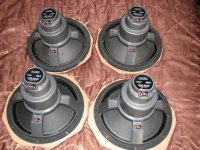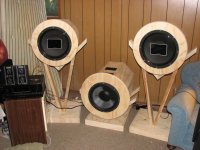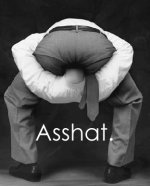For an absoulute kick **** high efficiency speaker how would you guys rate this driver.
Model 604-8H-III
Great Plains Audio's Two-Way Loudspeakers
Model 604-8H-III
Great Plains Audio's Two-Way Loudspeakers
that 2c2 stuff
None of my business, but even the table appears to stand on dog feet.
@ Melon
buy 2 pairs
one for ya , one for me
(moi lacking one pair of smallish ones)

look here 6moons audio reviews: Stephæn's Altec 604 Dream Speaker

buy 2 pairs
one for ya , one for me
(moi lacking one pair of smallish ones)

look here 6moons audio reviews: Stephæn's Altec 604 Dream Speaker

Last edited:
@ Melon
buy 2 pairs
one for ya , one for me
(moi lacking one pair of smallish ones)
I reckon these might go well in one of Dave's (planet10) fonken cabinets, or open baffle with woofer support.
@ Melon
buy 2 pairs
one for ya , one for me
(moi lacking one pair of smallish ones)
look here 6moons audio reviews: Stephæn's Altec 604 Dream Speaker
@ melonhead....
youd need petrol, lighter and an axe as well for those.

buy 2 pairs
Works for me.
Attachments
enough to make the point
Got any rubbery shots of Rosario Dawson instead ?
Attachments
I have got the room. Just wondering whether they are worth the cost or whether there are better alternatives.
try to hear them first
or whether there are better alternatives.
If you like that midrange kind of sound, there is hardly a better speaker for you.
First post in the forum, please excuse the length or placement if incorrect. Hello. I'm getting F5 turbo balanced fever for theorietical reasons, yet I'm a born skeptic if ever there was one and don't really know what the benefits will SOUND like.
I've always been interested in ear training. Not learning to "hear" the imaginary, but really being able to distinguish and name genuine characteristics of reproduction or reinforcement in a meaningful way. And beyond reproduction of reinforcement to be aware of the environment, the 'ambience' of a space, and resonant sounds of an object when struck and what that sound tells you about the object, what human hearing probably analyzes to make a more successful species, etc. This has been pretty successful in regards to frequency response and reverberation characteristics and most varieties of gross distortion, so that my friends and I can talk in common terms about audio without it sounding like a wine-tasting instead. But when it comes to subtle amplifier characteristics...our current common ear training and vocaulary fall apart. I'm particularly interested in learning the sonic signatures of:
- added odd-order harmonics
- added even-order harmonics
- TIM from slow devices with really excessive feedback
and probably a few others unnamed for obvious reasons (as my problem is in the ID and naming). But without ready access to an amp like some of Nelson's with adjustments for odd/even harmonics ratio, or purposely making amps with bad characteristics, and not even having a class-A reference available at home, this is not simple. Especially with my limited 'sonic memory'. I go someplace and enjoy their class-A amp; then I go home and enjoy my class-B system's obviously greater power. But without a real A/B real-time switching direct comparison opportunity I haven't learned much in all these years. I can't identify anything obviously wrong with my professional amps, or even a characteristic sonic signature except their power limits. And that's with non-polar coupling electolytics. I'm astounded at how similar my class "D" amps sound to my class "B" amps.
Now I'm curious about possibly using a new toy as an ear-training tool. I picked up a stereo Aphex Aural Exciter at Goodwill for $14 (it had the wrong 9vDC wall-wart with it and really uses a 24vAC power supply, which was another few bucks from my local Radio Shack which is the McDonald's of the electronics industry here in the US). And then I found another identical Aphex for $50. This thing is supposed to add shimmering, pleasant, even-order harmonics above the adjustable frequency threshold, and is a cheap mass-market adaptation of the original tube APHEX devices leased to west-coast studios in the '70's.
What's more astounding to me is that it is an "effect" which adds "distortion" but unlike most distortion that interferes with "clarity" it supposedly adds "clarity"??? Suppposedly somwhere there's an AES paper about it improving vocal intelligibility more than simple EQ.
So if a clipped waveform is squared-off and approaching a square wave, and a square wave is all odd-order harminics, perhaps I do have an idea of what odd-order harmonics sound like. Will the Aphex teach me what even-order harmonics sound like?
So does anybody have an actual circuit or functional description of this thing? I've been hearing about them since the original tube models were rented to west-coast studios with liner credits. Is there anything much to be learned from playing with it?
I'd love some kind of "ear training" session perhaps at the next Burning Amp. Let everyone listen to the comb-filter effects of short delays, or how modulating that delay makes a flange. Compare the sound of some topologies that emphasize various characteristics, with A/B comparisons.
In computer science I learned that a high-level categorization of problems might be into the two categories of A) those problems that can be solved by throwing money and resources at them or B) those problems whose solution is not dependent on the scale of resources dedicated.
I had significant early exposure to efficient horns and their unique capability of producing certain high levels (and I went to school with Tom Danley). I found long ago (in the middle of my semi-pro sound days) that much of engineering and design is compromise and trade-offs, especially in speaker and sound system design. I observed the consistent trend toward cheaper, smaller, more powerful amps. And I saw the distortion specs for speakers an order of magnitude worse than the distortion specs for amplifiers.
So, I decided long ago to say "to heck" with efficiency. I can improve pretty much every other aspect of perfomance in trade-off by sacrificing efficiency and throwing money at the power problem poor efficiency creates, and enjoy a future that further favors the cost benefits of that approach.
And, playing in the highly-inefficient arena, the gross distortions of the persistent "last watt" shortfall are frequently in my face and gives powerful psychological reinforcement of the prejudice toward emphasis on the last watt rather than the first watt.
Now I do more reading, and more listening, and open my mind again. But the meaningful lessons are harder to come by. After some intellectual internal debate I'm even considering altering the bias and fans on my class B amps... But I really have too little actual experience and ear training to actually know what to expect.
There's lots to consider. For one thing, one efficient-speaker's first watt may create the same SPL as a thousand times that electrical power on my inefficient system. So is the emphasis really on the first watt, first milliwat, first kilowatt??? Doesn't matter, I get the point regardless of the units of measurement. Perhaps there is some learning curve. Most people first embraced CDs because of the lack of surface noise they were unable or unwilling to listen thru before they learn to detect their limitations. I guess insufficient power is like that surface noise to me, just too disturbing to tolerate. Of course, I should probably complain about "insufficient output" rather than "insufficient power" with an open mind accepting other paths like high-efficiency speakers.
So, short of building another amp (last amp I built was 35 years ago) specially designed for ear-training, how do I go about some ear training and self-education about the various amp characteristics? Can anyone (everyone) learn to be one of the "golden-eared" audiophiles who claim they can so easily hear the characteristics I don't now? Visiting high-end systems doesn't help without A/B comparison. Though mid-fi often grates on me, above a certain threshold of transparency I'm all-in enjoying the music. Am I lucky my class "B" amps don't bother me, or am I missing something having nevison and identify problems without A/B comparison, I just don't have the audio memory to compare over long time differences, and don't have the opportunity for A/B comparison between my class B and something theoretically better (or at least more 'pleasing').
I've always been interested in ear training. Not learning to "hear" the imaginary, but really being able to distinguish and name genuine characteristics of reproduction or reinforcement in a meaningful way. And beyond reproduction of reinforcement to be aware of the environment, the 'ambience' of a space, and resonant sounds of an object when struck and what that sound tells you about the object, what human hearing probably analyzes to make a more successful species, etc. This has been pretty successful in regards to frequency response and reverberation characteristics and most varieties of gross distortion, so that my friends and I can talk in common terms about audio without it sounding like a wine-tasting instead. But when it comes to subtle amplifier characteristics...our current common ear training and vocaulary fall apart. I'm particularly interested in learning the sonic signatures of:
- added odd-order harmonics
- added even-order harmonics
- TIM from slow devices with really excessive feedback
and probably a few others unnamed for obvious reasons (as my problem is in the ID and naming). But without ready access to an amp like some of Nelson's with adjustments for odd/even harmonics ratio, or purposely making amps with bad characteristics, and not even having a class-A reference available at home, this is not simple. Especially with my limited 'sonic memory'. I go someplace and enjoy their class-A amp; then I go home and enjoy my class-B system's obviously greater power. But without a real A/B real-time switching direct comparison opportunity I haven't learned much in all these years. I can't identify anything obviously wrong with my professional amps, or even a characteristic sonic signature except their power limits. And that's with non-polar coupling electolytics. I'm astounded at how similar my class "D" amps sound to my class "B" amps.
Now I'm curious about possibly using a new toy as an ear-training tool. I picked up a stereo Aphex Aural Exciter at Goodwill for $14 (it had the wrong 9vDC wall-wart with it and really uses a 24vAC power supply, which was another few bucks from my local Radio Shack which is the McDonald's of the electronics industry here in the US). And then I found another identical Aphex for $50. This thing is supposed to add shimmering, pleasant, even-order harmonics above the adjustable frequency threshold, and is a cheap mass-market adaptation of the original tube APHEX devices leased to west-coast studios in the '70's.
What's more astounding to me is that it is an "effect" which adds "distortion" but unlike most distortion that interferes with "clarity" it supposedly adds "clarity"??? Suppposedly somwhere there's an AES paper about it improving vocal intelligibility more than simple EQ.
So if a clipped waveform is squared-off and approaching a square wave, and a square wave is all odd-order harminics, perhaps I do have an idea of what odd-order harmonics sound like. Will the Aphex teach me what even-order harmonics sound like?
So does anybody have an actual circuit or functional description of this thing? I've been hearing about them since the original tube models were rented to west-coast studios with liner credits. Is there anything much to be learned from playing with it?
I'd love some kind of "ear training" session perhaps at the next Burning Amp. Let everyone listen to the comb-filter effects of short delays, or how modulating that delay makes a flange. Compare the sound of some topologies that emphasize various characteristics, with A/B comparisons.
In computer science I learned that a high-level categorization of problems might be into the two categories of A) those problems that can be solved by throwing money and resources at them or B) those problems whose solution is not dependent on the scale of resources dedicated.
I had significant early exposure to efficient horns and their unique capability of producing certain high levels (and I went to school with Tom Danley). I found long ago (in the middle of my semi-pro sound days) that much of engineering and design is compromise and trade-offs, especially in speaker and sound system design. I observed the consistent trend toward cheaper, smaller, more powerful amps. And I saw the distortion specs for speakers an order of magnitude worse than the distortion specs for amplifiers.
So, I decided long ago to say "to heck" with efficiency. I can improve pretty much every other aspect of perfomance in trade-off by sacrificing efficiency and throwing money at the power problem poor efficiency creates, and enjoy a future that further favors the cost benefits of that approach.
And, playing in the highly-inefficient arena, the gross distortions of the persistent "last watt" shortfall are frequently in my face and gives powerful psychological reinforcement of the prejudice toward emphasis on the last watt rather than the first watt.
Now I do more reading, and more listening, and open my mind again. But the meaningful lessons are harder to come by. After some intellectual internal debate I'm even considering altering the bias and fans on my class B amps... But I really have too little actual experience and ear training to actually know what to expect.
There's lots to consider. For one thing, one efficient-speaker's first watt may create the same SPL as a thousand times that electrical power on my inefficient system. So is the emphasis really on the first watt, first milliwat, first kilowatt??? Doesn't matter, I get the point regardless of the units of measurement. Perhaps there is some learning curve. Most people first embraced CDs because of the lack of surface noise they were unable or unwilling to listen thru before they learn to detect their limitations. I guess insufficient power is like that surface noise to me, just too disturbing to tolerate. Of course, I should probably complain about "insufficient output" rather than "insufficient power" with an open mind accepting other paths like high-efficiency speakers.
So, short of building another amp (last amp I built was 35 years ago) specially designed for ear-training, how do I go about some ear training and self-education about the various amp characteristics? Can anyone (everyone) learn to be one of the "golden-eared" audiophiles who claim they can so easily hear the characteristics I don't now? Visiting high-end systems doesn't help without A/B comparison. Though mid-fi often grates on me, above a certain threshold of transparency I'm all-in enjoying the music. Am I lucky my class "B" amps don't bother me, or am I missing something having nevison and identify problems without A/B comparison, I just don't have the audio memory to compare over long time differences, and don't have the opportunity for A/B comparison between my class B and something theoretically better (or at least more 'pleasing').
Last edited:
Hi cyclecamper and Cal - copy this link as well please. You are right - this should have it's own thred...
Table of Contents for Art Ludwig's sound page
BTW - cyclecamper - Welcome to diyAudio!!!


This is a good topic for discussion.... Well - maybe not so much for me because I'm a big dummy that is often hearing impaired...
For doggy fans of Buddy da Dachshund - he came out of surgery just fine and I will pick him up inna couple of hours. Thanks for all of your good thoughts for him..
Table of Contents for Art Ludwig's sound page
BTW - cyclecamper - Welcome to diyAudio!!!
This is a good topic for discussion.... Well - maybe not so much for me because I'm a big dummy that is often hearing impaired...
For doggy fans of Buddy da Dachshund - he came out of surgery just fine and I will pick him up inna couple of hours. Thanks for all of your good thoughts for him..

Attachments
Last edited:
- Home
- Amplifiers
- Pass Labs
- The Pass Pub: The High-End Off Topic Thread









